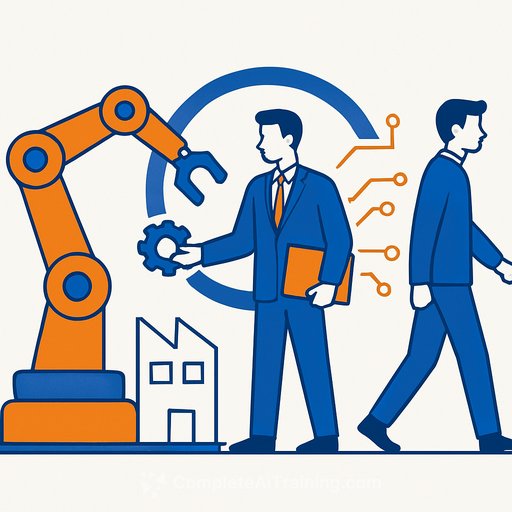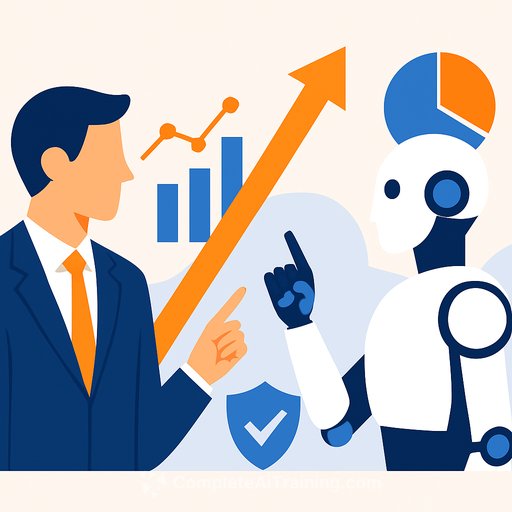Robotics Explained: Why ABB Sold Its Robotics Business to SoftBank
ABB has agreed to sell its Robotics division to SoftBank Group for US$5.4bn, stepping away from a potential listing. Closing is expected in mid-to-late 2026, pending regulatory approvals, and aligns with a leadership transition as Sami Atiya prepares to exit.
The move signals a clear strategic pivot: ABB doubles down on electrification and automation, while SoftBank advances its Physical AI thesis by combining advanced robotics with AI and next-gen computing.
The strategy behind ABB's decision
ABB's board compared SoftBank's offer with a spin-off and chose speed and certainty of value. With limited business and tech synergies between Robotics and the rest of ABB, the sale removes complexity and tightens strategic focus.
"It reflects the long-term strengths of the division, and the divestment will create immediate value to ABB shareholders," says Peter Voser, ABB's Chairman. He added that proceeds will be deployed under ABB's established capital allocation principles.
What SoftBank is buying
SoftBank is positioning the acquisition as a cornerstone for Physical AI. "SoftBank's next frontier is Physical AI," says Masayoshi Son, Chairman & CEO of SoftBank Group. "Together with ABB Robotics, we will unite world-class technology and talent under our shared vision to fuse Artificial Super Intelligence and robotics - driving a ground-breaking evolution that will propel humanity forward."
This deal follows SoftBank's 2025 purchase of a US$2bn stake in Intel, underscoring a sustained push into AI and compute. For context on each company's strategy, see ABB Investor Relations and SoftBank Group.
Financials at a glance
- Deal value: US$5.4bn; expected net cash proceeds of ~US$5.3bn after costs.
- Accounting: ~US$2.4bn non-operational pre-tax gain; separation costs of ~US$200m (about half included in 2025); cash taxes of US$400-500m.
- Division metrics (2024): US$2.3bn revenue (~7% of ABB total), 12.1% operational EBITA margin, ~7,000 employees.
- Timeline and structure: From Q4 2025, Robotics classified as discontinued operations. ABB reorganizes into three segments, with Machine Automation moving into Process Automation.
- Closing: Targeted for mid-to-late 2026, subject to regulatory approvals.
Why this makes sense for ABB
Robotics has different demand patterns and market dynamics than ABB's core businesses. Exiting now removes an operational outlier, simplifies the portfolio, and frees capital for higher-fit opportunities in electrification and automation.
Shareholders get earlier value realization versus waiting for a listing, with a cleaner corporate structure and fewer cross-cycle distractions.
What to watch on SoftBank's side
- AI stack integration: How ABB Robotics' software and controls pair with SoftBank's AI, data, and compute assets.
- Go-to-market: Channel, pricing, and service models by region and vertical, and how existing OEM/ISV relationships are managed.
- Talent retention: Keep rate for key engineers and field service teams through close and beyond.
- Customer continuity: Backlog delivery, warranty coverage, and lifecycle service across installed base.
Leadership transition
Sami Atiya, President of Robotics & Discrete Automation and Executive Committee member, will leave ABB by end-2026. He exits the Executive Committee at year-end 2025 and will remain a strategic adviser to support separation throughout 2026.
"Sami has played an instrumental role in building a robotics business that covers everything from industrial robots to state-of-the-art collaborative and autonomous mobile robots, backed by some of the most advanced software and AI solutions," says Morten Wierod, CEO of ABB.
Operator implications for executives
- Supply and service assurance: Confirm service-level commitments, spare parts coverage, and escalation paths during the transition.
- Contract review: Identify change-of-control clauses, support obligations, and pricing protections in framework agreements.
- Roadmap visibility: Request updated product and software roadmaps and validation timelines under new ownership.
- Risk diversification: If ABB Robotics is a single-source dependency, map viable second-source or complementary options.
- Data and compliance: Validate data handling, safety certifications, and regional compliance under SoftBank stewardship.
KPIs and milestones to track
- Regulatory progress and closing date certainty.
- Retention of critical engineering and service talent.
- Order intake, backlog conversion, and EBITA trends through the transition.
- Separation and integration costs versus plan.
- Customer satisfaction and field reliability metrics across installed base.
Key dates
- Q4 2025: Robotics reported as discontinued operations.
- End 2025: Sami Atiya steps down from ABB's Executive Committee.
- Mid-to-late 2026: Transaction expected to close, subject to approvals.
- End 2026: Sami Atiya departs ABB after advising on the transition.
Action plan for leadership teams
- Run a vendor risk review and confirm continuity for mission-critical cells and lines.
- Secure executive-level points of contact at ABB and SoftBank for issue escalation.
- Update 2025-2027 capex and opex plans with scenario ranges for pricing and support.
- Revisit automation roadmaps to align with ABB's refocus on electrification and process automation.
- Upskill internal teams on AI-enabled automation to shorten evaluation and deployment cycles. Consider curated options by role at Complete AI Training.
Your membership also unlocks:






